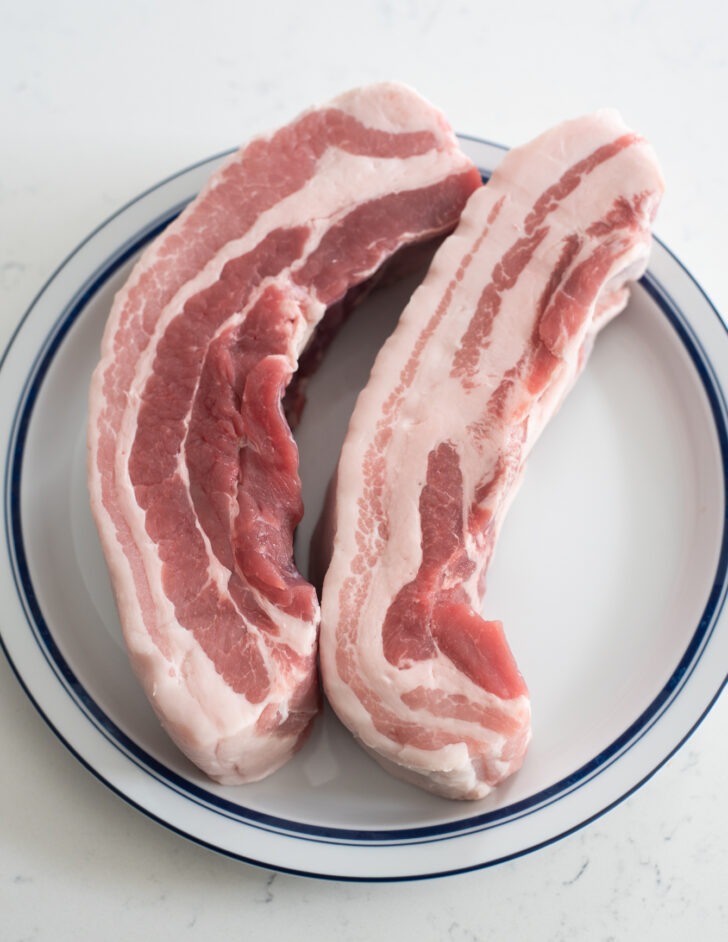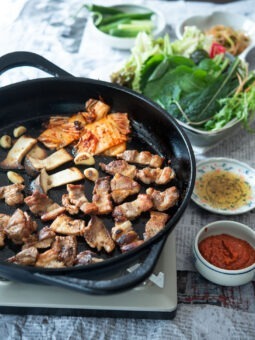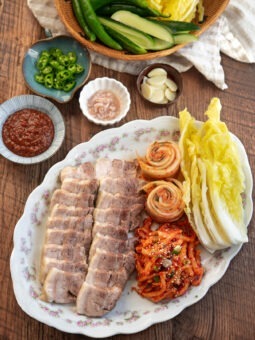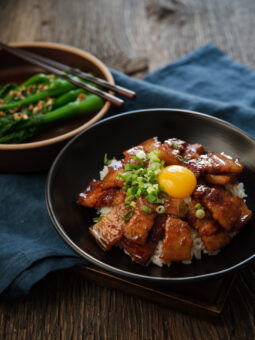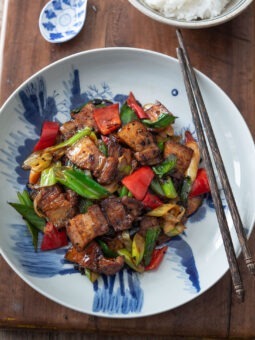Pork Belly (Samgyupsal)
Pork belly is a versatile and flavorful cut of meat that has gained immense popularity in Korean cuisine. Known as “samgyeopsal (삼겹살)” in Korean, pork belly is a staple ingredient in many traditional Korean dishes and is highly regarded for its rich taste and tender texture.
The pork belly cut comes from the underside of the pig, specifically the belly region. It is characterized by its alternating layers of succulent meat and delicious fat, which contribute to its unique flavor profile. The layers of fat in pork belly help keep the meat juicy and moist during cooking, making it incredibly tender when properly prepared.
In Korean cuisine, pork belly is often enjoyed in a Korean barbecue setting, known as “samgyeopsal gui.” Thinly sliced pork belly is grilled at the table, allowing diners to cook the meat to their preferred level of doneness. The sizzling pork belly releases its enticing aroma, and the fat caramelizes, resulting in a delightful combination of crispy edges and melt-in-your-mouth tenderness. The cooked pork belly is typically wrapped in lettuce leaves, along with various condiments like spicy gochujang (red pepper paste), garlic, and ssamjang (a fermented soybean paste), creating a harmonious blend of flavors and textures.
Apart from Korean barbecue, pork belly is also used in numerous other Korean dishes. It is a key ingredient in dishes like bossam, where the pork belly is boiled until tender and served with various accompaniments such as pickled vegetables, kimchi, and ssamjang.
Another popular dish is jokbal, which involves braising the pork belly in a flavorful broth until it becomes incredibly tender and then serving it sliced with a dipping sauce.

